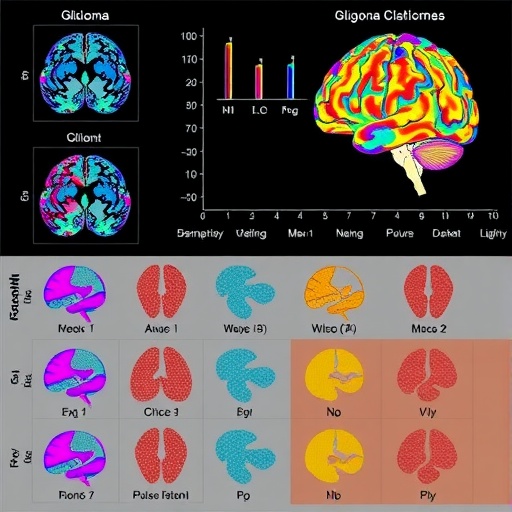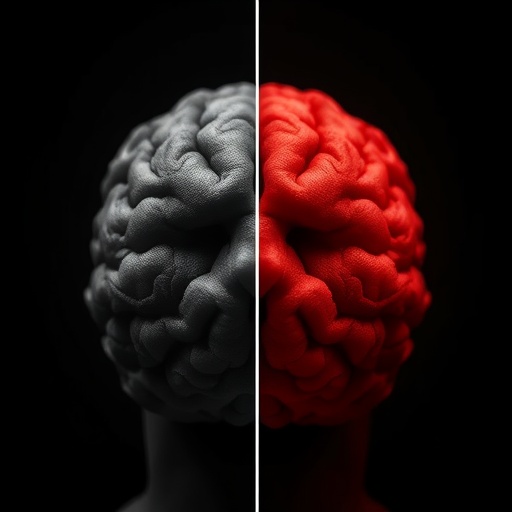In the rapidly evolving digital landscape, internet addiction has emerged as a pervasive challenge, particularly among youth populations worldwide. A groundbreaking study conducted in the Eastern Mediterranean Region sheds new light on the complex interplay between youth characteristics, social anxiety disorder, and internet addiction. This research holds significant implications for mental health professionals, educators, and policymakers alike, as the region grapples with escalating digital engagement and its psychological repercussions.
The research, spearheaded by Elrewany, Ghazy, Shiba, and colleagues, specifically investigates the mediatory role of social anxiety disorder in the relationship between youth demographics and internet addiction. This nuanced approach moves beyond simplistic cause-and-effect paradigms, offering a layered understanding of why certain young individuals may be more vulnerable to excessive internet use that borders on addictive behaviors. The study’s implications reach far beyond the Eastern Mediterranean, suggesting potential universal mechanisms underpinning digital dependency.
Internet addiction, categorized by compulsive internet use and an inability to control online activities despite adverse consequences, has garnered increasing attention over the past two decades. This phenomenon is particularly troubling among adolescents and young adults, a demographic at critical stages of social, psychological, and neurological development. The Eastern Mediterranean, with its unique sociocultural and technological milieu, provides a valuable context for examining how distinctive youth characteristics impact the trajectory of internet addiction.
.adsslot_tRNHgUpBXF{ width:728px !important; height:90px !important; }
@media (max-width:1199px) { .adsslot_tRNHgUpBXF{ width:468px !important; height:60px !important; } }
@media (max-width:767px) { .adsslot_tRNHgUpBXF{ width:320px !important; height:50px !important; } }
ADVERTISEMENT
One of the most striking revelations from this study is the identification of social anxiety disorder as a critical mediator. Social anxiety disorder, characterized by an intense fear of social situations and negative evaluation, is a condition that can foster avoidance behaviors, including withdrawal from real-life interactions. The study suggests that youth experiencing social anxiety are more likely to seek refuge in online spaces, where anonymity and control over self-presentation offer a temporary reprieve from real-world social pressures.
Methodologically, the study employed robust psychometric assessments among a representative youth cohort across multiple countries within the region. Using validated diagnostic instruments for both internet addiction and social anxiety disorder, coupled with demographic profiling, the research team unveiled statistically significant pathways demonstrating how social anxiety exacerbates vulnerability to internet addiction. This comprehensive data collection and analysis provide a high degree of confidence in the study’s conclusions.
The developmental implications are profound. Adolescents with heightened social anxiety often encounter challenges in forming and maintaining offline social relationships, pushing them toward virtual interactions. The internet, with its infinite communities and platforms, offers a seductive alternative to meet social needs without the anxiety provoking face-to-face engagement. This adaptive, but ultimately maladaptive, coping mechanism can spiral into compulsive use patterns, undermining mental health, academic performance, and overall well-being.
Interestingly, the study also highlights how demographic factors such as age, gender, and socioeconomic status interact with social anxiety to influence internet addiction susceptibility. For instance, younger adolescents and males in certain socioeconomic brackets exhibited differential risk profiles, suggesting that interventions must be tailored and culturally sensitive to effectively address this multifaceted problem. Such granular insights challenge one-size-fits-all approaches that have dominated the conversation surrounding internet addiction.
The digital ecosystem itself contributes to this complexity. The design of social media platforms and online games often leverages psychological triggers, such as intermittent rewards and social validation loops, amplifying the addictive potential for vulnerable youth. The interaction between these engineered digital environments and preexisting social anxieties creates a feedback loop, intensifying compulsive internet use and reinforcing withdrawal from healthier social engagement opportunities.
From a neurobiological standpoint, the convergence of social anxiety and internet addiction involves alterations in brain regions responsible for reward processing, emotional regulation, and executive function. Chronic internet overuse in socially anxious youth may lead to dysregulation within neural circuits, exacerbating vulnerability to other mental health disorders like depression and generalized anxiety. This neuropsychological perspective underscores the urgency for early detection and intervention.
The study’s findings advocate for integrated preventive strategies that address both social anxiety and internet use behaviors. Mental health programs in schools and community settings need to incorporate social skills training, anxiety management techniques, and digital literacy education. By fostering resilience and promoting healthier offline social connections, such interventions could significantly reduce the risk trajectory toward internet addiction.
Moreover, the research calls for policymakers to recognize internet addiction and social anxiety as interrelated public health issues. Regulatory frameworks governing digital content, particularly those targeting youth, must balance the benefits of connectivity with protections against exploitation and psychological harm. Promoting awareness campaigns that destigmatize mental health challenges can further empower young individuals to seek support without apprehension.
As internet technologies continue to evolve, future research should focus on longitudinal designs that track the causal pathways between social anxiety symptoms and internet addiction over time. Incorporating biometric data, such as neuroimaging and physiological markers, could deepen understanding of the underlying mechanisms. Additionally, exploring culturally specific factors influencing youth behavior in the Eastern Mediterranean and beyond will refine intervention models for diverse populations.
This study’s innovative approach in contextualizing internet addiction within the broader framework of social anxiety enriches the scientific discourse and offers actionable insights. Recognizing the mediating role of social anxiety enables a paradigm shift from treating internet addiction symptoms in isolation toward addressing foundational psychosocial vulnerabilities. Such comprehensive perspectives are essential as societies strive to harness the benefits of digital connectivity while mitigating its latent risks.
In reflecting on the Eastern Mediterranean context, it is clear that this region’s unique blend of cultural, economic, and technological dynamics offers a critical vantage point for global mental health research. The challenges and solutions identified here have resonance worldwide, as youth everywhere navigate the complexities of digital life amid evolving social structures and mental health landscapes.
To conclude, the pioneering work by Elrewany and colleagues delivers compelling evidence that social anxiety disorder significantly influences the onset and progression of internet addiction among youth in the Eastern Mediterranean Region. By elucidating this mediating role, the study charts a path forward for more nuanced, effective mental health interventions geared toward young people enveloped in the digital age. The broader scientific and public health communities stand to benefit from incorporating these insights into multidisciplinary strategies aimed at safeguarding youth well-being in an increasingly wired world.
Subject of Research: The mediating role of social anxiety disorder in internet addiction among youth in the Eastern Mediterranean Region
Article Title: Youth Characteristics and Internet Addiction in the Eastern Mediterranean Region: The Mediating Role of Social Anxiety Disorder
Article References:
Elrewany, E., Ghazy, R.M., Shiba, H.A.A. et al. Youth Characteristics and Internet Addiction in the Eastern Mediterranean Region: The Mediating Role of Social Anxiety Disorder. Int J Ment Health Addiction (2025). https://doi.org/10.1007/s11469-025-01500-7
Image Credits: AI Generated
Tags: adolescent online behavior patternscompulsive internet behaviordigital dependency in adolescentsEastern Mediterranean youth mental healthimplications for educators and policymakersmediatory role of social anxietymental health challenges in the digital agepsychological effects of internet addictionsocial anxiety disorder and internet usesociocultural factors in internet addictionyouth demographics and technology useyouth internet addiction





